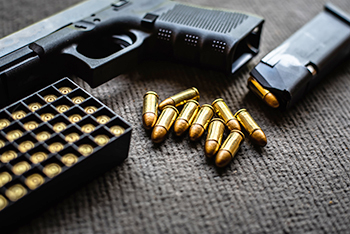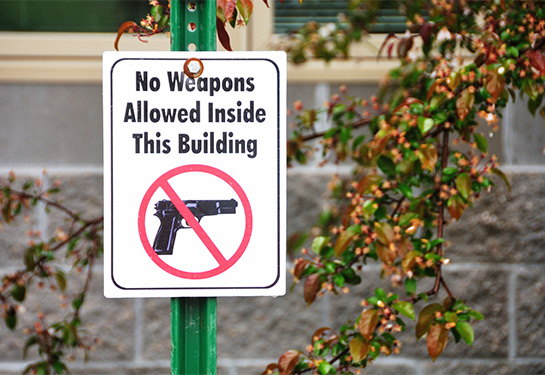Gunshot injuries in California drop, but percentage of firearm deaths goes up
UC Davis Health study also shows that nonfatal firearm injury rates vary widely across California
Gun-violence research experts at UC Davis Health say that despite a significant drop in firearm injuries in recent years in California, there has been a substantial increase in the state’s overall death rate among those wounded by firearms.

“We found that the number of nonfatal firearm injuries in California decreased over an 11-year period, primarily due to a drop in firearm assaults,” said Sarabeth Spitzer, lead author and a UC Davis research intern at the time of the study. “However, the lethality of those and other firearm injuries did not go down. In fact, it went up.”
The new study is online today in JAMA Network Open.
Nonfatal firearm injuries pose a significant health burden with great social and economic costs. For individuals who survive firearm injuries, the long-term physical and psychological effects can be devastating, requiring years of healthcare attention and rehabilitation. Until now, there has been relatively little knowledge about the distribution and types of nonfatal firearm injuries in the U.S.
The study used data from California’s Office of Statewide Health Planning and Development (OSHPD) for individuals treated in Emergency Departments (ED) or discharged from hospitals and data from the Centers for Disease Control and Prevention (CDC) WISQARS for fatal firearm injuries. Data were for the period between Jan. 1, 2005 and Dec. 31, 2015.
The study found that over the 11-year study period, there were approximately 81,000 ED visits and hospitalizations due to nonfatal firearm injuries. It also found that the overall rate of nonfatal firearm injuries decreased by 38%. While this decrease was driven primarily by a substantial decrease in firearm assaults, self-inflicted and unintentional injuries remained stable. The study identified around 70% of the nonfatal injuries were from an assault, 24% were unintentional injuries, 2% self-inflicted and 5% undetermined.
To capture the lethality of firearm injuries, the researchers calculated two versions of the case fatality ratio (CFR), the proportion of injuries that are fatal. The overall CFR is for all people who sustain a firearm injury, whether or not those people receive medical care (most people who die from gunshot wounds do so at the scene of the shooting). The clinical CFR is for people who survive to reach the hospital and receive medical care. California’s overall CFR for firearm injuries increased from 27.6% in 2005 to 32.2% in 2015, while the clinical CFR remained stable, at about 8%.
“The increase in the overall CFR may be due to a rise in the proportion of self-inflicted firearm injuries, which are usually deadlier than the other types of firearm injuries,” said Spitzer, currently a general surgery resident at Brigham and Women's Hospital.
Nonfatal firearm injuries by race and income
The study also found significant differences in income and source of payment for medical care by cause of injury. Those with assault-related injuries were more likely to be within the lowest income quartile (30%) and have self-pay (33%) or government coverage (37%).
Consistent with previous studies, it found that assaultive injuries were concentrated among young Black (33%) and Hispanic (46%) individuals from urban, lower income areas. In fact, Black men had an assault-related injury rate four times that of Hispanic men, the next highest racial group in terms of such injuries. The average age of individuals with assault-related injuries was 27 years.
Self-inflicted injuries were more likely older (average of 42 years) and concentrated among white (62%) individuals in higher income areas. Self-inflicted gunshot wounds are usually more severe than other gunshot injuries and require longer hospital stays.
The mean age of all individuals with firearm injuries was 27.5 years, and around 90% of them were men.
Nonfatal injury rates vary widely among California counties
The researchers mapped the county-level rates of nonfatal injury and found that incidents vary considerably among California counties.
In 2015, San Joaquin County had the highest nonfatal injury rate of 39.7 per 100,000 people - compared to Sonoma County’s 3.6 injuries per 100,000, the lowest in California. Around 48% of California’s 58 counties experienced a decrease in the rate of nonfatal firearm injury during the study period. The counties with the largest relative decrease in firearm injuries were Sonoma (73.8%) and Los Angeles (58.2%). Counties with rate increases tended to be in Northern California.
The study also found that urban counties had higher rates of firearm injury than rural counties.
Policy implications
There are two possible general explanations for the increase in the fatality rate: the treatment of firearm injuries has not substantially improved over that period of time, or the treatment did get better, but the injuries got worse. While there is no indication that the severity of injuries got worse, there is a need for improved timely treatment of firearm injuries.
One possible approach is for first responders to adopt the “scoop and run” strategy -currently implemented in Philadelphia - to get the injured to a health care facility as fast as possible. Timely transport of the injured to the hospital is key in saving lives.
“This study advances our understanding of the incidence, distribution and lethality of firearm injuries in California,” said Garen Wintemute, emergency physician and director of the UC Davis Violence Prevention Research Program (VPRP) and the UC Firearm Violence Research Center (UCFC). “We hope other states will use this as a model to evaluate the burden of nonfatal firearm injuries as a basis for improved prevention efforts.”
Wintemute also noted evidence of successful efforts, such as the major decrease in injuries in Los Angeles County.
In addition to Spitzer, study authors were Veronica A. Pear, Christopher McCort and Garen Wintemute from University of California Firearm Violence Research Center and Violence Prevention Research Program at University of California, Davis.
This research was supported by the University of California Firearm Violence Research Center with funds from the State of California. Additional support came from the California Wellness Foundation (2014-255), the Heising-Simons Foundation (2017-0447) and the University of California, Davis, Violence Prevention Research Program.
# # #
Article: Spitzer, Pear, McCort and Wintemute. Incidence, distribution, and lethality of firearm injuries in California from 2005 to 2015. JAMA Network Open. Doi: 10.1001/jamanetworkopen.2020.14736



